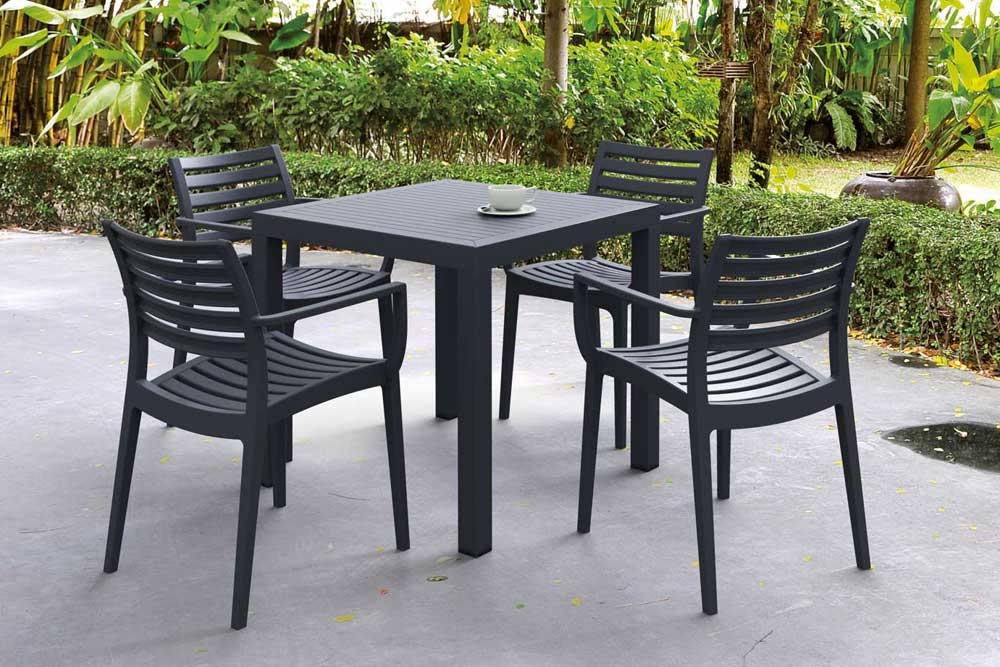Australia’s National Aged Care Design Principles and Guidelines: Design Principle 4 – Connect with Community

Note: This article continues our series on summarising the Australia’s National Aged Care Design Principles and Guidelines. See also: Design Principle 1 – Enable the Person, Design Principle 2 – Cultivate a Home and Design Principle 3 – Access the Outdoors.
In the world of aged care, the importance of fostering meaningful connections cannot be overstated. A key design principle that promotes these connections is Principle 4 – Connect with Community. This principle is all about encouraging residents to engage with their family, friends, and the wider community while participating in activities that enrich their lives. Let’s delve into the details of this principle and explore the guidelines that underpin it.
Objective of Aged Care Design Principle 4 – Connect with Community
The primary objective of Design Principle 4 – Connect with Community is to create opportunities for residents to connect with each other, their families, friends, and the local neighborhood. This principle strives to weave social bonds within the larger home environment and extends its welcoming embrace to the broader community.
Guidelines for Aged Care Design Principle 4
To achieve this objective, the following guidelines are put in place:
4.1 Neighbourhood Access
This guideline emphasizes the importance of convenient access to essential community resources such as cafes, shops, transportation, and religious services. Ideally, aged care homes should be situated near neighborhood centers to facilitate easy entry and exit, ensuring that residents remain connected with their surroundings.
4.2 Community Hub
Creating communal spaces is crucial in promoting interaction among residents and the local community. These spaces should be visible both from the street and the resident areas, making them inviting and easily accessible. Collaboration with local institutions, including places of worship, grocery stores, cafes, social clubs, and childcare facilities, can help establish vibrant hubs that benefit both residents and the wider neighborhood.
4.3 Easy Navigation to Households
Effortless navigation within the aged care home is key to fostering connections. Clear and straightforward routes should be established between the street entry, community hubs, and resident households. This ensures that residents can easily access the amenities and spaces they desire without any hindrance.
4.4 Integrated Building Form
Aged care homes should harmonize with the character of the surrounding neighborhood. This means that the building’s form, mass, façade articulation, surface finishes, and use of green space should align with the local architecture. When an aged care home seamlessly integrates into its neighborhood, it helps prevent negative perceptions among neighbors and residents.
Desired Outcomes
The ultimate goal of Design Principle 4 is to create an environment that encourages residents to engage socially, not only within the aged care facility but also in the local community. Achieving this goal may involve selecting sites near neighborhood centers or transforming existing buildings to include public realm spaces. Furthermore, adopting a care model that aligns with the environment’s design and fostering relationships with local community organizations and businesses can further enhance community connections.
In conclusion, Design Principle 4 – Connect with Community is a vital aspect of creating an enriched living experience for aged care residents. By following these guidelines and striving for the desired outcomes, aged care homes can become hubs of connection, fostering relationships that enhance the quality of life for all involved.
FAQs About Elderly Individuals Connecting with Community
Why is it important for elderly individuals to connect with their community?
Connecting with the community is crucial for the well-being of elderly individuals as it helps combat social isolation, enhances mental health, and promotes a sense of belonging.
What are the benefits of community engagement for the elderly?
Benefits include increased social interaction, emotional support, opportunities for recreation, and a sense of purpose, all of which contribute to a higher quality of life.
How can community connections positively impact the mental health of elderly individuals?
Community connections provide avenues for socializing, sharing experiences, and participating in activities, which can reduce feelings of loneliness and depression among the elderly.
Are there specific programs or initiatives designed to facilitate community engagement for the elderly?
Yes, many communities offer programs such as senior centers, social clubs, and volunteer opportunities tailored to the needs and interests of the elderly population.
How does community engagement contribute to the physical health of elderly individuals?
Community engagement often involves physical activities, such as walking groups or exercise classes, which can contribute to better physical health, improved mobility, and reduced risk of chronic conditions.
What role do intergenerational connections play in community engagement for the elderly?
Intergenerational connections foster a sense of shared experiences and provide opportunities for the exchange of knowledge and skills, enriching the lives of both the elderly and younger generations.
How can family members encourage and support elderly individuals in connecting with their community?
Family members can support community engagement by helping elderly individuals identify activities of interest, arranging transportation, and actively participating in community events together.
Are there challenges to community engagement for the elderly, and how can they be addressed?
Challenges may include mobility issues, transportation constraints, or fear of social settings. Communities can address these challenges by providing accessible spaces, transportation services, and creating welcoming environments.
Can community engagement help prevent or alleviate feelings of loneliness in the elderly?
Yes, community engagement is a powerful tool in preventing and alleviating loneliness among the elderly by fostering social connections and building a supportive network.
How can communities create inclusive environments to encourage elderly participation?
Communities can create inclusive environments by offering diverse activities, ensuring accessibility, promoting age-friendly policies, and actively involving the elderly in decision-making processes.
Australian Made Furniture that Follows the Australian National Aged Care Design Principles and Guidelines
Aged care chairs should be both supportive (Guideline 1.9 – Supportive Seating) and appropriate (Guideline 2.8 – Appropriate Furniture).
More News
Australia’s National Aged Care Design Principles and Guidelines: Design Principle 4 – Connect with Community

Note: This article continues our series on summarising the Australia’s National Aged Care Design Principles and Guidelines. See also: Design Principle 1 – Enable the Person, Design Principle 2 – Cultivate a Home and Design Principle 3 – Access the Outdoors.
In the world of aged care, the importance of fostering meaningful connections cannot be overstated. A key design principle that promotes these connections is Principle 4 – Connect with Community. This principle is all about encouraging residents to engage with their family, friends, and the wider community while participating in activities that enrich their lives. Let’s delve into the details of this principle and explore the guidelines that underpin it.
Objective of Aged Care Design Principle 4 – Connect with Community
The primary objective of Design Principle 4 – Connect with Community is to create opportunities for residents to connect with each other, their families, friends, and the local neighborhood. This principle strives to weave social bonds within the larger home environment and extends its welcoming embrace to the broader community.
Guidelines for Aged Care Design Principle 4
To achieve this objective, the following guidelines are put in place:
4.1 Neighbourhood Access
This guideline emphasizes the importance of convenient access to essential community resources such as cafes, shops, transportation, and religious services. Ideally, aged care homes should be situated near neighborhood centers to facilitate easy entry and exit, ensuring that residents remain connected with their surroundings.
4.2 Community Hub
Creating communal spaces is crucial in promoting interaction among residents and the local community. These spaces should be visible both from the street and the resident areas, making them inviting and easily accessible. Collaboration with local institutions, including places of worship, grocery stores, cafes, social clubs, and childcare facilities, can help establish vibrant hubs that benefit both residents and the wider neighborhood.
4.3 Easy Navigation to Households
Effortless navigation within the aged care home is key to fostering connections. Clear and straightforward routes should be established between the street entry, community hubs, and resident households. This ensures that residents can easily access the amenities and spaces they desire without any hindrance.
4.4 Integrated Building Form
Aged care homes should harmonize with the character of the surrounding neighborhood. This means that the building’s form, mass, façade articulation, surface finishes, and use of green space should align with the local architecture. When an aged care home seamlessly integrates into its neighborhood, it helps prevent negative perceptions among neighbors and residents.
Desired Outcomes
The ultimate goal of Design Principle 4 is to create an environment that encourages residents to engage socially, not only within the aged care facility but also in the local community. Achieving this goal may involve selecting sites near neighborhood centers or transforming existing buildings to include public realm spaces. Furthermore, adopting a care model that aligns with the environment’s design and fostering relationships with local community organizations and businesses can further enhance community connections.
In conclusion, Design Principle 4 – Connect with Community is a vital aspect of creating an enriched living experience for aged care residents. By following these guidelines and striving for the desired outcomes, aged care homes can become hubs of connection, fostering relationships that enhance the quality of life for all involved.
FAQs About Elderly Individuals Connecting with Community
Why is it important for elderly individuals to connect with their community?
Connecting with the community is crucial for the well-being of elderly individuals as it helps combat social isolation, enhances mental health, and promotes a sense of belonging.
What are the benefits of community engagement for the elderly?
Benefits include increased social interaction, emotional support, opportunities for recreation, and a sense of purpose, all of which contribute to a higher quality of life.
How can community connections positively impact the mental health of elderly individuals?
Community connections provide avenues for socializing, sharing experiences, and participating in activities, which can reduce feelings of loneliness and depression among the elderly.
Are there specific programs or initiatives designed to facilitate community engagement for the elderly?
Yes, many communities offer programs such as senior centers, social clubs, and volunteer opportunities tailored to the needs and interests of the elderly population.
How does community engagement contribute to the physical health of elderly individuals?
Community engagement often involves physical activities, such as walking groups or exercise classes, which can contribute to better physical health, improved mobility, and reduced risk of chronic conditions.
What role do intergenerational connections play in community engagement for the elderly?
Intergenerational connections foster a sense of shared experiences and provide opportunities for the exchange of knowledge and skills, enriching the lives of both the elderly and younger generations.
How can family members encourage and support elderly individuals in connecting with their community?
Family members can support community engagement by helping elderly individuals identify activities of interest, arranging transportation, and actively participating in community events together.
Are there challenges to community engagement for the elderly, and how can they be addressed?
Challenges may include mobility issues, transportation constraints, or fear of social settings. Communities can address these challenges by providing accessible spaces, transportation services, and creating welcoming environments.
Can community engagement help prevent or alleviate feelings of loneliness in the elderly?
Yes, community engagement is a powerful tool in preventing and alleviating loneliness among the elderly by fostering social connections and building a supportive network.
How can communities create inclusive environments to encourage elderly participation?
Communities can create inclusive environments by offering diverse activities, ensuring accessibility, promoting age-friendly policies, and actively involving the elderly in decision-making processes.
Australian Made Furniture that Follows the Australian National Aged Care Design Principles and Guidelines
Aged care chairs should be both supportive (Guideline 1.9 – Supportive Seating) and appropriate (Guideline 2.8 – Appropriate Furniture).
Commercial furniture by room
Based in Brisbane, we’re an Australian manufacturer of aged care furniture, retirement living furniture, hospital & healthcare furniture, hotel & accommodation furniture and student accommodation furniture. We also supply a range of commercial office furniture.
Discover the FHG Look Book: Your Source of Inspiration for Quality Australian-Made Commercial Furniture
- Quality Craftsmanship: See why we’ve been a trusted partner for over 25 years.
- Local Excellence: Learn how our Brisbane team ensures the highest standards.
- Inspiration and Ideas: Find innovative furniture solutions for any environment.
Don’t miss the opportunity to transform your commercial space with FHG’s expertly crafted furniture. Download the FHG Look Book today and start your journey towards exceptional design and quality.
























